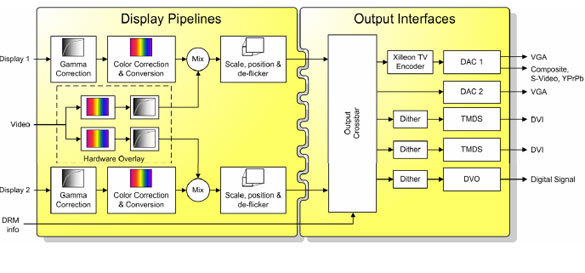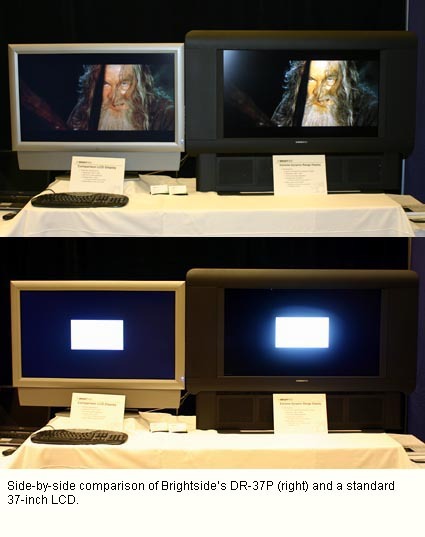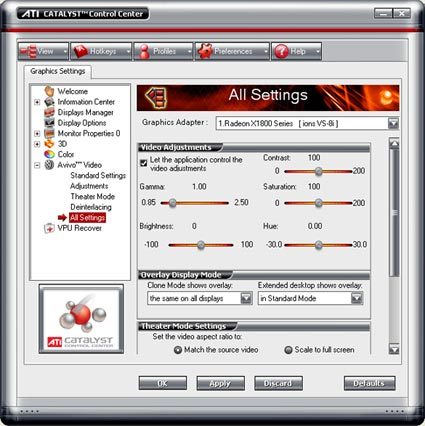ATI Enters The X1000 Promised Land
AVIVO
Launched last month, AVIVO is the culmination of the video capture and video display processes. At the launch, only ATI Theater 550 was capable of the video capture portion and there wasn't a display card available, until now. The entire X1000 family offers AVIVO.
Here is a diagram from ATI that describes all of the processes in the AVIVO pipeline.
In the first part, video capture, ATI includes steps like Automatic gain control, 3D comb filtering, 12-bit analog-to-digital conversion, hardware de-noising and digital demodulation. These adjustments are designed to improve the quality of incoming video.
If the signal is digital, it passes it directly to the decode segment. However, if the signal in is from an analog source it must first pass through the encode unit to get it into a digital format the GPU can use. AVIVO supports H.264, VC-1, WMV9, WMV9 PMC, MPEG-2, MPEG-4 and DivX formats. H.264 is video compression standard for both the Blu-Ray and HD-DVD formats.
The decode portion converts the data into either H.264, MPEG-2, MPEG-4, VC-1 or WMV9 formats. From here, the data enters the post-processing portion and finally to the display engine. The display engine uses gamma and color correction, compression, and depending on the output, dithering to make the image look sharp in the selected output display.
ATI states that AVIVO is compatible with the latest LCD display technologies. It features higher resolutions, new aspect ratios, faster response times and higher color fidelity. During our time at the ATI tech day for the X1000 briefings, we were able to see 16-bit color capability and HDR on the Brightside 37" LCD monitor driven by ATI hardware.
Brightside intros 200,000:1 contrast ratio display
Get Tom's Hardware's best news and in-depth reviews, straight to your inbox.
The HDR rendering is possible on the Brightside because the dual-link DVI in the Radeon X1000 series can send FP16 or INT16 data to the monitor.
For CRTs, the card will output at 10-bits, and for LCD displays it will output at 8-bit and 6-bit (notebook). If it has to output at something less that 10-bit, the AVIVO video out dithers the signal to give the best effects on the bit-limited displays.
Here is a screenshot of the AVIVO functions available in the Catalyst version we had to test these cards with.



